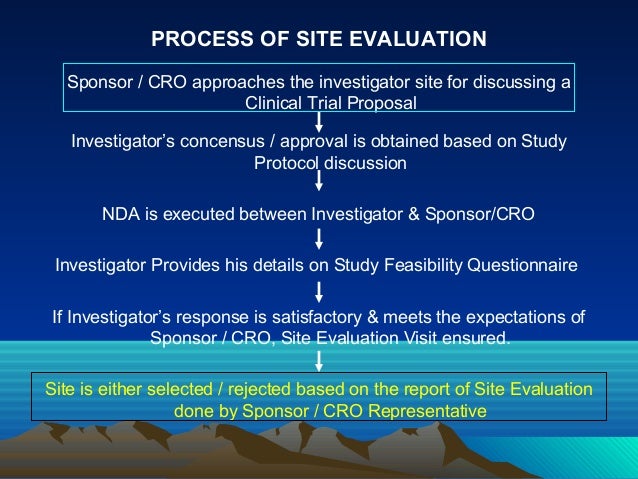Site Feasibility In Clinical Trials
Foxmail 7 Italiano Download Games. Article June 2014 Price indexes for clinical trial research: a feasibility study A study using a large sample of agreements between sponsors of clinical trials and clinical investigators produces estimated hedonic price indexes for clinical trial research, an important component of biomedical research and development. Measured as total grant cost per patient, nominal prices grew by a factor of 4.5 between 1989 and 2011, while the U.S. National Institutes of Health Biomedical R&D Price Index, the only published source of information on trends in pricing in the biomedical research-and-development sector, rose only slightly more than twofold. After controlling for changes in the characteristics of clinical trials (e.g., average number of patients per site and “site work effort”), however, the estimated rate of inflation in clinical trials costs was found to track the Biomedical R&D Price Index quite closely, suggesting that it should be feasible for statistical agencies to develop a producer price index for biomedical research-and-development activities. Expenditures for research and development (R&D) are widely acknowledged to a play a key role in economic growth and competitiveness, and statistics on R&D are closely watched as indicators of technological change and the nation’s economic performance.

Yet R&D has historically been treated in the national accounts as a business expense, rather than as an investment in knowledge, a convention that has important implications for estimating GDP and its growth. As a first step in treating R&D as an investment component of GDP, the Bureau of Economic Analysis (BEA) has created an R&D satellite account, which reports that R&D contributed 20 basis points to the reestimated 2.9-percent average rate of U.S. Real GDP growth from 1957 to 2007. But such calculations can be quite sensitive to the use of deflators, and the nature of R&D activities presents substantial price measurement challenges to statistical agencies. Although the Bureau of Labor Statistics (BLS) has steadily expanded the scope of its collection of price statistics on the service sector, it does not currently publish a producer price index (PPI) for business R&D services, a major component of total R&D activity in the United States. In experimenting with the satellite R&D accounts, BEA has utilized various proxy deflators to construct measures of real business R&D output, including cost-based aggregate indexes for inputs to R&D (that implicitly assume no productivity growth in R&D activities), weighted combinations of gross output prices of industries investing in R&D, and a variety of other next-best alternatives in lieu of actual R&D output prices. Were a broad-based PPI for contracted business R&D available, it could be used to develop estimates of real private sector R&D output by deflating a portion of the Census Bureau’s nominal expenditure estimates for NAICS 5417, “Scientific Research and Development Services.” As noted by BLS Assistant Commissioner David Friedman, however, what is desired is an ideal PPI “that directly measures actual market transactions for R&D output.” This article contributes to that broader effort by studying the measurement of R&D transactions prices for the specific area of biomedical clinical research.
Biomedical research is the single biggest component of the R&D sector’s estimated contribution to growth: in the BEA’s initial estimates in the satellite account, biotechnology-related industries contributed 44 percent of the total business R&D contribution to real GDP growth between 1998 and 2007. Following biotechnology’s lead were information-, communications-, and technology-producing industries, with a 36-percent contribution; transportation equipment industries, with 11 percent; and all other industries, with 9 percent. Within biomedical research, clinical trials account for a large fraction of commercial R&D expenditures: of the $46.4 billion spent by Pharmaceutical Research and Manufacturers of America (PhRMA) member companies on R&D in 2010, $32.5 billion (70 percent) went toward clinical trials involving human subjects, with a much smaller proportion devoted to preclinical and basic research. In recent years, clinical research has accounted for about one-third of the total budget of the National Institutes of Health (NIH; e.g., $10.7 billion out of $30 billion in fiscal-year 2010), of which a substantial fraction ($3.2 billion that same year) went toward clinical trials. Clinical research is also an activity that has undergone considerable organizational, technological, and economic changes, with potentially important implications for productivity. Over the past three decades, the design and management of clinical trials has become increasingly sophisticated, and at the same time, the types of organizations conducting clinical trials have changed.